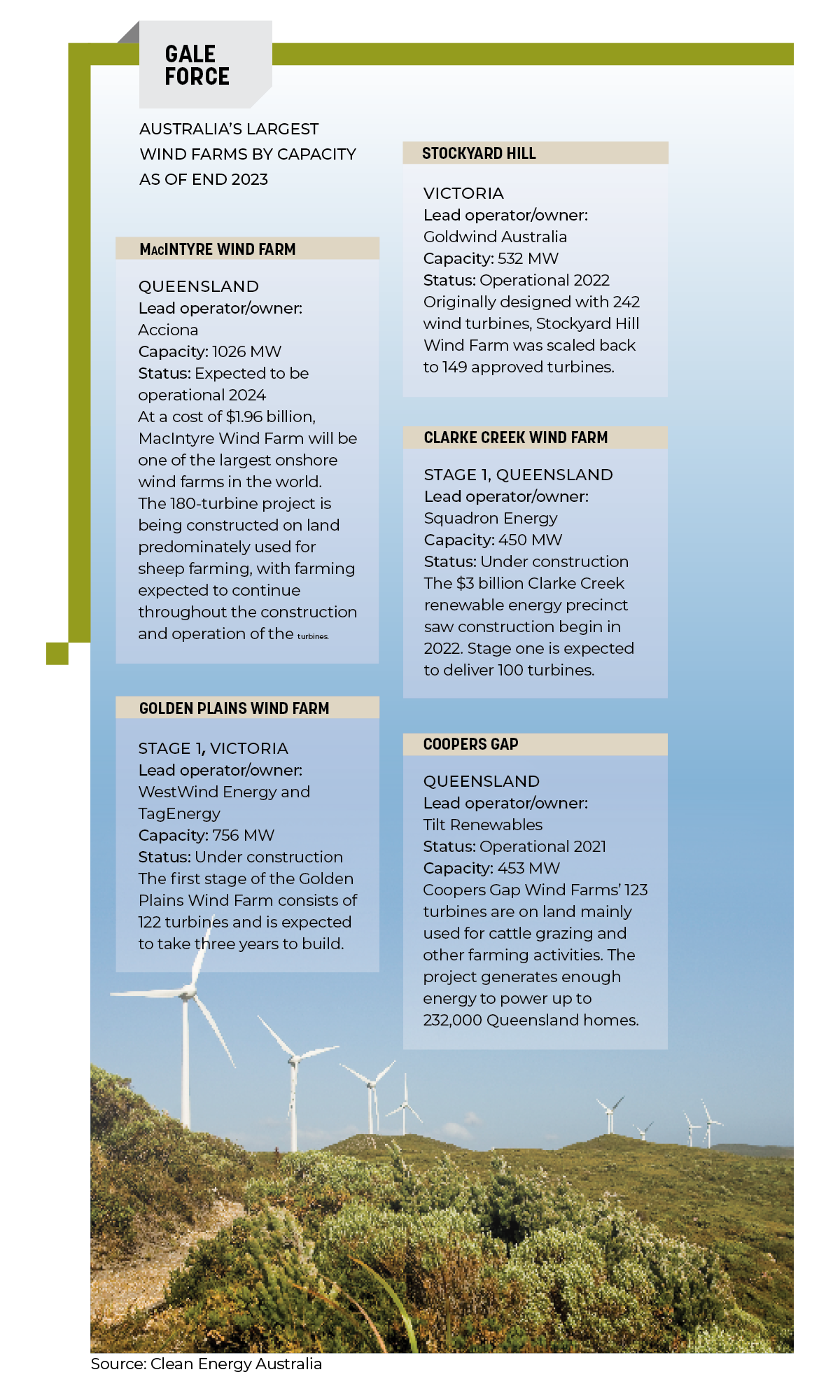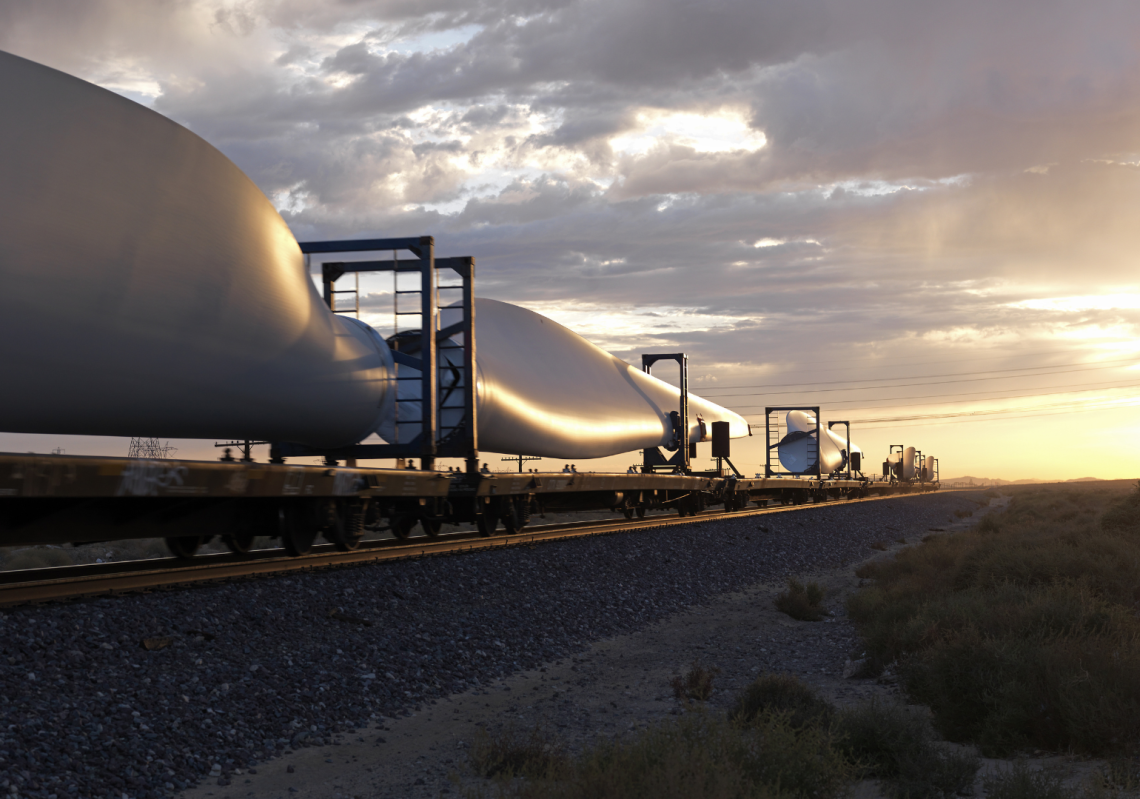Meeting Australia’s renewable energy target will require the biggest wind, solar and battery projects the country has ever seen. But will these mega-projects have an environmental impact of their own?
Forty. That’s how many wind turbines Australia needs to install every month until 2030, according to Energy Minister Chris Bowen, to meet the country’s emissions reduction target of 43 per cent by 2030.
That’s on top of installing more than 22,000 solar panels every day – or 60 million by 2030.
But one of the big challenges of any large infrastructure project is its environmental impact. A recent report by law firm Herbert Smith Freehills and the Clean Energy Investor Group found the average approval timeframe for a major solar project in NSW is 705 days.
For major wind projects, the timeframe blew out to 3488 days – or nine and a half years. How can engineers support the transition to renewables while limiting the impact on the local environment?

Aurecon Technical Director of Power Generation Claire Whiteway said the environmental challenges faced by wind farms tend to vary by location. But two that come up consistently are noise and visual impact.
Whiteway said there is a well-established quantitative assessment process for measuring these impacts, and proven approaches to avoid or mitigate them. But the greatest success comes when time is spent at the beginning of a project making sure it is in the right location.
“If we can work with developers, making sure that appropriately experienced and qualified teams are working together to find the most appropriate sites – and guide that early decision-making – that makes a huge difference in terms of the starting point,” Whiteway said.
Beca Principal Environmental Planner Melody Valentine agreed. She said the best solutions come when an environmental assessment is incorporated at the site identification phase of a project.
“Projects need to be located to best capture their energy source, on suitable topography, and ideally in proximity to a suitable grid connection, limiting the amount of viable locations,” Valentine said.
As technology improves, remote monitoring and robotics will reduce the need for people on site and help to broaden the site selection criteria – though projects still need to be connected to the grid.

Another option is building wind farms offshore.
“Offshore wind avoids the need for land clearing, though [it] needs careful siting to reduce marine ecosystems impacts,” Valentine said. “Advancements in offshore wind also offer opportunities for co-locating wind and tidal energy generation.”
Collision course
Aurecon Senior Ecologist Justin Sullivan said wind farms can come with complex biodiversity considerations. He said different locations have different constraints, often relating to the distribution of threatened species.

“I’ve worked on a lot of projects with wind farm developers,” Sullivan said. “Early, detailed ecological investigations really help understand and identify where the key constraints are and can really reduce surprises down the line.”
Sullivan said regulators require extensive biodiversity investigations in the planning stages to understand what flora and fauna use the area. This includes a large focus on birds and bats, particularly if there are threatened species, and how high they are flying.
Sullivan said raising wind turbines higher can help reduce collisions.
“We know from bird utilisation data that the vast majority of birds utilise the space near to the ground or within tree canopies,” Sullivan said. “And by bringing turbines even higher, you’re getting out of the space for a large proportion of the bird life.”
Sullivan said optics and artificial intelligence can also be used to detect specific sensitive bird species and temporarily shut down wind turbines. And a study in Norway found painting wind turbines could significantly reduce bird deaths.
Then there is habitat loss and other impacts to native vegetation on the ground. Sullivan said the largest ground impacts for wind farms come not from the footings of the turbines themselves but from the network of access tracks needed to deliver materials.
“Sometimes that has to be quite wide, depending on the topography,” he said.

Sullivan said the risks can be avoided or mitigated through things like shifting turbine layouts, changing the design or implementing turbine-free buffers around areas such as wetlands and breeding habitats.
“Even to the level of micrositing the access roads around individual trees … to reduce disturbance,” he said.
Sullivan said recent technological advances such as blade manipulator technology and new crane delivery techniques can also reduce the disturbance caused by bringing materials to site.
Sun and water
Kala Senathirajah FIEAust CPEng, Chair of Engineers Australia’s College of Environmental Engineering Board, said wind farms convert the kinetic energy from wind into electrical energy.

“This process could disturb the natural exchanges of energy between the land surface and the atmospheric layers close to it,” she said.
Senathirajah said wind turbines can affect local climates by changing the temperature, wind speed and vertical air mixing. But in some situations, that can bring potential benefits, such as mitigating adverse climates and decreasing local wind speed.
Wind farms aren’t the only renewable energy projects to impact the environment. Senathirajah said large-scale solar farms need a lot of land, which can affect local ecosystems and wildlife habitats.
Some solar technologies, she said, such as solar thermal plants, use water for cooling, which can strain local water resources.
“[And] the manufacturing of solar panels sometimes includes hazardous materials,” Senathirajah said.
Building dams for hydropower can disrupt river ecosystems, affecting fish migration and altering habitats. Reservoirs can also release methane.

Valentine said there are also infrastructure upgrades needed to support the transition to renewables.
“Along with the renewable projects, Australia’s electricity grid is undergoing transformation to facilitate the transition,” she said. “[This] also needs to be factored into the overall environmental impacts.”
But Whiteway believes wind farms receive the greatest attention because they can cover a large area and, unlike projects such as battery infrastructure, tend not to be built in places that are already degraded.
Balancing act
Senathirajah believes engineers are able to drive innovation by collaborating across disciplines and sectors, and prioritising sustainability in every aspect of renewable energy projects.
She said this could include promoting a circular economy approach using advanced materials and design, and exploring nature-based solutions.
Whiteway said using emerging innovations often requires balancing different impacts within a project itself. Raising turbines above a bird’s flight path, for instance, risks increasing the visual impact.
“There’s always this balancing act,” Whiteway said. “If we don’t accelerate the decarbonisation of the electricity sector and focus on getting the balancing act right, local ecosystems face an even greater threat from the impacts of climate change.”
Whiteway, who previously worked in Ireland, said the discussion of environmental impact versus benefit for renewable projects was had in Europe several years ago.
“[It was] very, very similar to the journey Australia is currently on,” she said. “It resulted in lots of European countries incorporating that into … the environmental impact assessment process.”
In the future, Sullivan expects Australia’s Environment Protection and Biodiversity Conservation Act to move to a nature-positive approach.
“But we’ve found developers [are] moving towards this already in advance of that legislative change,” he said. “Not just meeting their net-zero requirement but going beyond that to provide additional environmental benefits for nature.”
Whiteway said it’s great to see industry moving ahead of legislation.
“It really shows the implementation of that practice of avoid, minimise, mitigate, and then actually mitigate for a greater good than even the impact of your project,” she said. “The wind industry has been, really, the early mover in that in Australia.”




The proposed closure of Eraring, our largest coal-fired baseload power station, is sheer and utter green madness. It will mean that the 500kV transmission lines from Eraring to the central west and to Kemp’s Creek substation in Western Sydney will have no input. It will also mean the closure of the Tomago aluminium smelter. Renewables, such as solar and wind, are uncontrollable sources, cannot control voltage or frequency, and also cannot match supply to demand.
Re. Wind Turbines and Raising their Height
All birds are at risk but the larger ones, such as owls, hawks, eagles, which fly at higher levels when hunting, will still be at a high risk of fatal collision with the fast rotating rotor blades.
The reproductive rate of these birds is low and is unlikely to match their increased death rate.
My concern being that as the larger species are particularly vulnerable, their losses may lead to some extinction of unique Australian wildlife.
Assessments should include consideration and protection of same.
Nice to read an article that is prepared to paint the real picture.